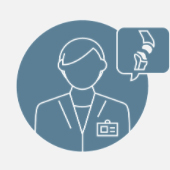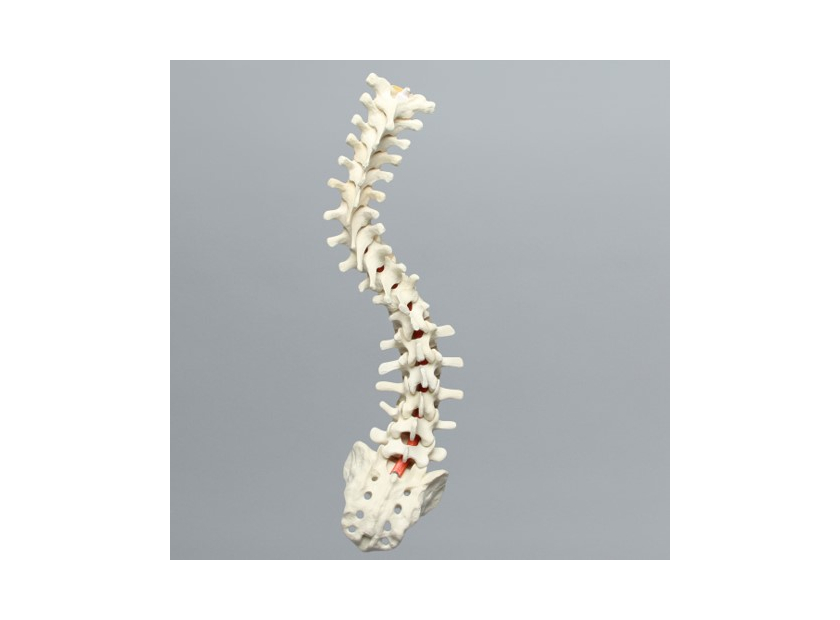6 Benefits of Neurosurgery Bone Models In Medical Training Programs
Neurosurgery is an ever-evolving field, and traditional training methods must be constantly reevaluated for safety and efficacy. The established surgical education model of a trainee performing procedures on patients under the supervision of senior surgeons perhaps bears too much risk in the modern operating room; instead, the use of neurosurgery bone models may offer emerging generations of neurosurgeons a safer, cheaper, and more readily repeatable bio-skills training method.
Advances in bone model design afford trainees a realistic experience which they can repeat under customizable, varying presentations until they have the familiarity required to make a successful contribution to real patient outcomes.
It is a potential that could change the way neurosurgery is taught.
Practice Makes Perfect
In one example, BMC research outlines the advantages of bio-skills instruction for screw placement in scoliosis treatment. The complex nature of surgical spinal cord interventions means that procedural improvement comes from repeat exposure to the specific operation. In this case, the research found that Sawbones models were adequate in developing transferable surgical skills in both novice and senior trainees. This was only possible because the model in question was able to realistically recreate conditions under which the precise free hand technique required to insert screws between vertebrae would be required.
The training technique highlights several major benefits of using neurosurgery bone models to prepare novices for highly skilled procedures:
- Haptic feedback improves immersion
- Composite bone mimics real strength and feel
- Buildability means models grow with trainee skills
- Dual usage for arthroscopic and open procedures
- Affordable, durable, and reusable models aid standardization
- Customizable to suit any lesson
The continuing evolution of neurosurgery best practices means medical instructors need access to training models that can replicate specific presentations and demonstrate the latest techniques. Both medical students and experienced practitioners can benefit from neurosurgery bone models that let experts pass on their learnings in replicable, standardized, and highly efficient settings.
1. Haptic Feedback Improves Immersion
Haptic feedback has become a must-have feature of the digital revolution, appearing in everything from video games to smartphone alarms. In the hands of a skilled medical instructor, however, it shifts from being a neat technological feature into a highly valuable tool.
When applied to training models, haptic feedback immerses students in the real world of dense bone, delicate nerves, and the need for harmony between precision and force when executing some of neurosurgery’s more invasive procedures.
The use of sound or vibration provides students with an instant response to their actions and adds a level of sophistication to simulations that have traditionally lacked the urgency and consequences of real clinical settings.
2. Composite Bone Mimics Real Strength and Feel
The human skull is one of the least deformable structures in nature and it is not constructed out of a uniform material, despite what teaching aids of old may have suggested. Today’s composite bone models far more accurately replicate the performance of both the highly porous trabecular bone and the dense cortical that make up the human skull. Future neurosurgeons need experience navigating both forms—and with a range of tools—if they are to gain familiarity with some of the field’s most common procedures.
Exposure to advanced surgical practices prepares students for professional careers pursuing outcomes that conform to both medical and aesthetic standards.
3. Buildability Means Models Grow with Trainee Skills
Neurosurgery bone models offer repeatability, but eventually, as a trainee’s skills develop, new challenges will be required to further their education. Modern models can be created with in-built adaptations that instructors can implement to scale a beginner’s progress and encourage advanced skill development.
This natural progression allows trainees to develop their non-surgical skills as well, such as confidence and procedural communication, along with the technical aspects of open and arthroscopic procedures.
4. Dual Usage for Arthroscopic and Open Procedures
That dual purpose mentioned above greatly expands the use and lifespan of bone models. It allows students to navigate both arthroscopic procedures and open operations, which can be more time- and side-effect-critical. As neurosurgeons need mastery of tools and procedures along the length of the spinal cord and the skull, including the increasingly common craniotomy, any model that allows for standardized and controlled exposure to a range of methodologies only reduces the task of transferring skills to a clinical setting.
The authenticity of modern models also allows instructors to use them in lectures instead of relying on live clinical procedures.
5. Affordable, Durable, and Reusable Models Aid Standardization
One of the chief benefits of using modern, engineered neurosurgery bone models is standardization. The neurosurgery field moves at a speed that tests the skills of even the most experienced surgeons—a recent World Neurosurgery report described more than 15 areas of advancement expected in the next 20 years in skull-based procedures alone. The ability to demonstrate and effectively communicate these emerging practices requires access to affordable, durable, and reusable models.
Such models can be applied to entire student cohorts and adapted and refined with procedural and technical developments. In fact, modern model engineering standards have reached a point that practically any design required to fulfill instruction can be produced, even at commercial quantities.
6. Customizable to Suit Any Lesson
Custom-designed neurosurgery bone models are currently available to simulate procedures, teaching points, techniques, or anatomical representations essential to the preparation of the next generation of neurosurgeons.
Customization unlocks the full potential of medical experts by giving them precise tools for demonstration and exposure that make their knowledge more easily transferable. Neurosurgeons learn with their hands as much as their minds, and customizable bone models give them an authentic environment in which to hone the life-saving skills that will one day serve the greater population.
Neurosurgery Bone Models Make Better Surgeons
Better models make better surgeons.
Neurosurgery is a high-risk specialty with little room for error. The dangers, costs, and resource constraints inherent in continuing to apply a clinical-dependent training model of trainee intervention under supervision ignore the advances in model simulations. The new generation of models that have highly sensitive haptic and material performance—and are affordable, durable, and fully customizable—offer an obvious improvement over the traditional approach.
By embracing the latest in engineered neuroscience training models, instructors can be equipped with both the theory and the tools to produce surgeons who are better prepared for the operating room than any generation previous.
As the leader in the creation of innovative medical training models, Sawbones is your partner in developing solutions that effectively transfer training to the operating room, improving patient outcomes. Our engineers can produce orthopedic, training, and biomedical models that meet your educational standards and provide practical value. Contact us today online or call us at 206-463-5551 to begin creating a better learning environment.

If you're seeking something you can't find on our website, our sales team is happy to help. We can either direct you to the right model or provide a free quote on the right custom project to meet your needs. Discover options with our clear bone models, laminated blocks, custom displays, or other machining projects.








